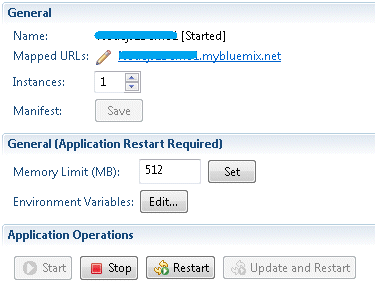
- Rational application developer dynamic web project how to#
- Rational application developer dynamic web project android#
- Rational application developer dynamic web project code#
Open the Java source file for the main activity, MainActivity.java in the src/main/java/ directory.Īdd the lines shown in bold. To use the WebView you need to reference it in the Activity. In the XML pane, remove the self-closing slash from the end of the FrameLayout element, and add the element and a new closing tag, as shown: The Blank Activity layout doesn't include any children. This file defines the layout for your main activity, and the Preview panes show the a preview of the activity. Select the Text tab at the bottom of the of the activity_main.xml editor to see the XML markup. You can ignore this, as it's not required for this tutorial.) Lotus Product documentation (Divested to HCL Technologies June 2019) IBM Support. (You may also see a fragment_main.xml file. Use these resources to find information related to products like Lotus, Rational, Tivoli, or other older brands or to find similar information that was previously published on developerWorks: IBM Documentation. Open the activity_main.xml file in the src/main/res/layout directory if it is not already open. You need to add a WebView to the main activity's layout. The manifest file defines what's included in the application: activities, permissions, themes, and so on. Dimensions, strings, and other values that you might not want to hard-code in your application. XML layout files that define the structure of UI components. Image resources used by the native application. Resources used by the native application. Your project's structure should look something like this:Ī few of the more import folders are identified in the picture:
Rational application developer dynamic web project code#
# Add the WebViewĪndroid Studio will give you some boilerplate code to set up your application.
Rational application developer dynamic web project android#
Go to Tools > Android > SDK Manager and make sure you have Android 4.4 (API 19) installed. Note: After you have your project created, make sure you have the KitKat SDK installed.

Click Finish to accept the defaults and create the project. The next page lets you change the names for the default Activity and layout. If you're planning to venture further into native Android development, you can find more information in the Android Activities API guide In this case, the application's main activity will hold the web view. Note: An Android Activity can be viewed as a screen of an app. For the purposes of this guide, select Blank Activity and click Next. The next page lets you select the main Android activity for your application. (You can change the icon later, so don't worry if you don't have one right now.) When you're done, click Next. On the next page, you're prompted to enter an application icon. Note: If you only intend to support the Chromium WebView (rather than the old WebKit WebView) set Minimum required SDK to API 19: Android 4.4 (KitKat).

On the next page, enter your application name, package name and target SDKs, and click Next. When the installation completes, Android Studio launches and displays the welcome screen. So you'll need start off by installing Android Studio, as described here: This tutorial uses Android Studio, the new design-and-build IDE for Android. If you're already familiar with programming for Android, you may want to refer to to Building Web Apps in WebView on the Android developer site instead. Note: This tutorial assumes you're a developer with limited or no experience with the Android development environment, but have some experience with Java. This tutorial walks you through creating a new Android Project, adding a WebView, loading a remote URL, and then loading a local HTML page. The only way I can get round this at the moment is to create a jar with the source in from the java project and drop it into the \lib\ folder containing the other jars which are on the build path.Getting started with the Android WebView is fairly simple, whether you want load a remote URL or display pages stored in your app. The source file in the web project is called 'JavaSource' and the classes are in 'WebContent\WEB-INF\classe s'.
Rational application developer dynamic web project how to#
I've tried endless messing around with the build path for both projects and I cant get it to pick up the java files from the java project.Ĭould someone please give me a "dummies guide" on how to set this up correctly? The problem I've got is that I can not get the web project to see the source in the java project when it is being run (i get the rror). I have created a Dynamic Web Project and this contains relevent java, jsp, xml that I am developing, however I've also created a separate java project which contains a few generic classes that I would like to keep separate from the Web Project. I have a problem using Rational Application Developer v7 (eclipse v3.).


 0 kommentar(er)
0 kommentar(er)
